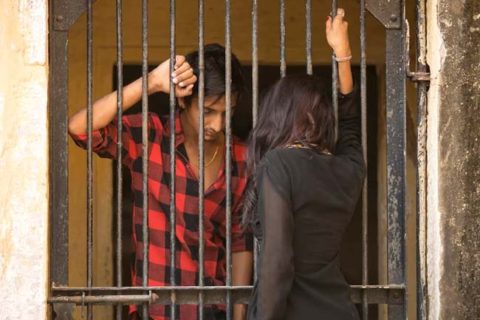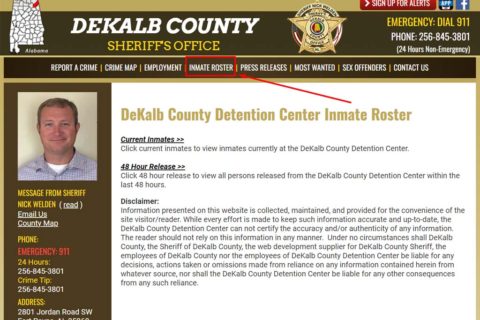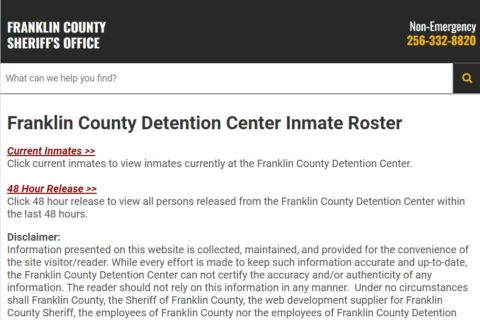Spending life behind the bar is like spending life in hell. Actually, not all prisons look like hell. However, living in such a place still can be hard because they are not free like living outside and they are away from their loved ones. Once again, it is not easy for some, if not all, especially the ones who face imprisonment for the first time.
If one of your family members, friends, or anyone that is close to you is incarcerated, you are recommended to reach them out to make their time at the facility easier. One of the ways that you can do this is to visit them at the facility. If that individual is incarcerated at a federal prison and you are planning to visit them in the near future, make sure to fill out the BOP visiting form. Please read the following if you are not familiar with this form.
About BOP Visiting Form
BOP visiting form refers to a form created by the Federal Bureau of Prisons or BOP. The official name of the form is actually Form BP-A0629. It is also called the Visitors’ Information Form. It was created by BOP to vet those who are planning to visit someone who is incarcerated at one of the federal prisons, including a minor.
Download here: www.bop.gov/policy/forms/BP_A0629.pdf

Upon entering the prison, an inmate will create a visiting list. First of all, they will be handed a visitor information form or BOP visiting form. Upon getting the form, they will complete their portion of the form. When they are done, they will send a copy to each potential visitor. Then, the potential visitor will send the form that they have completed back to the address of the inmate listed on the form. If a person is not approved to visit, the prison officials will notify the inmate. After that, the inmate will have to tell that individual about the rejection.
Talking about the potential visitors, they are the ones who can be added by an inmate to their visiting list. The question is who are those people who can be added by an inmate to their visiting list?
There are a number of people who can be added by an inmate to their visiting list. They are categorized into some, as follows:
- Immediate family: Mother, father, step-parent(s), foster parent(s), brothers, sisters, legal spouse, registered domestic partner, children
- Relatives: Grandparents, uncles, aunts, in-laws, cousins
- Other approved visitors: Friends or associates (10 or less), foreign officials
- Employers, sponsors, parole advisors, attorneys, members of religious groups, members of civic groups
Purpose of the BOP Visiting Form
The aim of the Bureau of Prison or BOP when creating the BOP visiting form is to ensure that all incoming visitors are clean and don’t have any threat. If any security threat is found, the application will be turned down by the prison officials immediately.
Filling Out BOP Visiting Form
The BOP visiting form is divided into two sections, the upper and the lower part. The upper one should be filled by the inmate. The first thing that the inmate has to do on the upper section is to provide the information about them, including their first name, registration number, name and address of the institution where they are incarcerated, and the date of filling the form. Then, there is a pre-written request for the potential visitor. In the request, there is also part that the potential visitor should be aware of, which states the part of the procedure to approve this application is by gauging their suitability via a criminal background check. In order to check on the background information of the potential visitor, the prison officials may contact law enforcement agencies.
As for the lower part of the BOP visiting form, the one who should fill it is the potential visitor. They have to fill out both the questionnaire and release forms. They should also keep in mind that it is not a must for them to supply any of the said information. Besides, there will be no penalties against them. However, the application may be suspended if the application form is incomplete. Usually, the potential visitor will be asked to complete the form so that the application can be proceeded by the prison officials. If the potential visitor provides false information, they can be fined not more than 250,000 or 5-year imprisonment or both.
Check out the summary of the lower section of BOP visiting form that should be filled by the potential visitor below:
- The legal name of the potential visitor
- The date of birth of the potential visitor
- The current physical address of the potential visitor, including the zip code
- The current telephone number of the potential visitor, including area code
- The race and sex of the potential visitor
- The US citizenship status of the potential visitor
- The SSN or Alien Registration number of the potential visitor
- The passport number of the potential visitor
- The driver’s license number and state of issuance of the potential visitor
After that, the potential visitor has to state a few things, such as:
- Their relationship with that inmate
- If they wants to visit the named inmate
- If they knew this inmate before they got incarcerated
- If the answer to the question is yes, then how many years they have known each other and where this relationship developed
- Whether they have ever been convicted of a crime
- If yes, then tell the number, date, place and nature of the conviction
- If they were incarcerated before, state if they are currently on probation, parole, or any other kind of supervision
- If so, provide the name, address, and telephone number of the supervising officer
- The time they want to visit the inmate
- Whether they are communicate with other inmates via phone, mail, or official prison visits
- If yes, provide the names of the inmates and their current location
In addition, there is also a section for the authorization to release information. This one is known as a pre-written express authorization release request by the potential visitor to law enforcement agencies. It helps the agencies to release any information they may have about the past criminal records of the potential visitor. To make the information released, the potential visitor has to sign this application. If they are below 18 years, the one who should do that for them on their behalf is their parent or their legal guardian.
In the BOP visiting form, there is a template providing instructions to those inmates who speak Spanish and are not fluent in English. It is useful for them so they can understand the type of information expected of them and where to fill out those things.
Returning BOP Visiting Form
Once the potential visitor has completed the BOP visiting form, they have to send the form back to the prison. For anyone who is wondering about the address, it is highlighted at the top part of the form.
Approving or Rejecting BOP Visiting Form
After getting the BOP visiting form from the potential visitor, the prison officials will process it. They will decide to approve or reject it in between 30 to 60 days. How long the process will take depends on a few things, such as the amount of applications received by the officials, the amount of prison staff available to review the applications, and the time it takes to conduct a background check on the potential visitor.
In case there is no news about the application after 60 days, it is better to reach out to the warden in charge. Do not hesitate to ask about it and what is actually happening. There are some possibilities as to why the application is taking longer than 60 days, including it was sent to the wrong address and it was denied.
If an application is denied by the prison officials, usually, the potential visitor will get a letter sent by the prison officials. In the mail, it will be stated why the application is rejected. The same thing usually happens if the application is denied. It is stated that the potential visitor is the only one that will be informed about the reason for rejection. As for the inmates, they will not be informed about this. In some cases, the potential visitor may have to add some information to complete the visitation application process.
Bottom Line
In conclusion, BOP visiting form is the name of the form created by the Bureau of Prisons to be filled by both inmates and their potential visitor. This kind of form was created to filter the potential visitors because there may be some who want to visit the inmate with bad intentions.

A bookworm and researcher especially related to law and citizenship education. I spend time every day in front of the internet and the campus library.




